Venom Piercing (Frog Eyes): Types, Pain Level, Healing, & Cost
Discover the benefits and risks of getting this daring and edgy tongue piercing.

Image: StyleCraze Design Team
If you are looking for something that captures your bold and fiery personality perfectly, then venom piercing might just be what you are looking for! The process involves getting two piercings on either side of the tongue, creating an edgy look that turns heads wherever you go. It’s no surprise that this modish look has managed to capture people’s interest all across the globe. So, whether you are a beginner stepping into this world or a seasoned enthusiast, this article will provide important insight into the procedure, pain level, healing time, aftercare practices, and more. Scroll down and prepare yourself for the journey ahead!

 Piercing Guide: Venom Piercing
Piercing Guide: Venom Piercing- Placement: On either side of the tongue
- Best Jewelry: Straight barbell
- Cost: $60 to $100
- Pain Level: Medium
- Healing Time: 4 to 6 months
In This Article
What Is Venom Tongue Piercing?
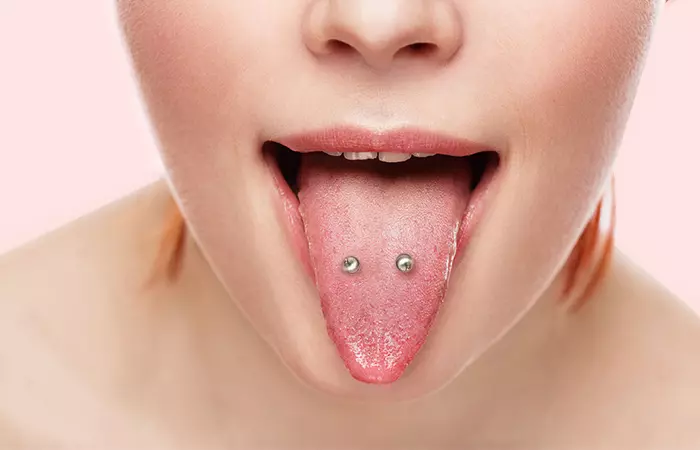
Venom tongue, also known as double tongue piercing, involves punctuating the top left and right sides of the tongue, mirroring each other. The placement of the piercing jewelry resembles the bulging eyes of a frog when the mouth opens, giving it the moniker frog eye piercing.
 Did you know?
Did you know?In various Indigenous tribes of Central and South America, tongue piercings were performed as part of religious ceremonies. The act of piercing and bleeding was believed to serve as an offering to the gods, symbolizing sacrifice and inner cleansing. This sentiment aligns with similar practices seen in rituals like the Thai Vegetarian Festival in Phuket or Malaysia’s Thaipusam festival, where participants endure physical piercing while in a trance-like state, invoking divine power and showcasing their spiritual devotion.
The modern take on venom piercings, though removed from its traditional ceremonial context, still holds subtle undertones of personal transformation and individuality. For some, the dual piercings represent balance or symbolize the duality of life’s challenges and triumphs. The bold placement of venom piercings also reflects courage and a willingness to endure discomfort in pursuit of self-expression.
The different types of this body adornment allow individuals to choose one that perfectly captures their essence. Find out what they are below.
Key Takeaways
- Venom piercing involves creating two piercings on the center or either side of the tongue.
- Cleaning this edgy piercing daily and eating soft foods may reduce the risk of irritation and infection.
- Choose hypoallergenic jewelry materials such as stainless steel or gold to avoid the risks of allergic reactions and rejection.
Types Of Venom Tongue Piercing
Its versatile nature makes this piercing a popular choice among people. Given below are the two types of venom tongue piercing:
1. Horizontal Venom Tongue Piercing
View this post on Instagram
Horizontal tongue piercing, also known as a scoop or snake eye tongue piercing, requires puncturing the surface of the sides of the tongue. Unlike traditional tongue piercings, it does not have a proper front and back. As a result, they have a higher risk of migration. Since this side tongue piercing passes through the two tongue muscles, it increases the risk of tooth damage.
2. Vertical Venom Tongue Piercing
View this post on Instagram
This piercing is done vertically on either side of the center or tip of the tongue. It gives the appearance of snake fangs and is located at the front of the tongue where the fangs would start from, giving the moniker vertical venom tongue piercing.
Venom or frog eyes piercing sounds exciting and adventurous. But that begs the question, is it dangerous? Scroll down to find out.
Is Venom Piercing Dangerous?
This piercing poses no danger when done under the guidance of a reputable piercer. Their deep knowledge of the tongue’s anatomy allows them to locate the perfect placement for your piercing without damaging the important nerves present in the tongue. Following hygiene protocols strictly and using clean and sterilized tools allows them to reduce the risk of complications during the healing process.
Frog eye piercings are safe when done properly under the expertise of a professional piercer. But are they painful? Check out the next section to know more.
How Painful Is Venom Piercing?
Many people rate the pain somewhere between 4 to 5 on a scale of 10 as it passes through connective tissue instead of cartilage, reducing the pain level. In fact, most report experiencing more discomfort and pain after the procedure. However, pain intensity is subjective and differs from person to person.
To manage any discomfort, you can try a few simple techniques both before and after the piercing. You can apply a cold compress to soothe swelling, while over-the-counter pain relievers like ibuprofen can ease soreness. Practicing deep breathing or relaxation exercises before the procedure can also help reduce anxiety and tension, making the experience smoother.
Understanding the safety and pain associated with the piercing is just one aspect of the journey. Check out the next section to learn about the process to help prepare yourself before your appointment.
Venom Piercing Process
The venom tongue piercing procedure requires the precision and expertise of a skilled piercer to ensure a smooth and comfortable experience. Here is a step-by-step guide:
- Research thoroughly and select a skilled and licensed piercer working at a reputable studio.
- They will examine your tongue to ensure you are a good candidate for the piercing.
- Once that is done, they will ask you to fill out a consent form and choose a jewelry of your choice.
- Your piercer will ask you to rinse your mouth with an antiseptic mouthwash to reduce the number of bacteria in the mouth.
- Next, they will inspect your tongue and mark the two points for piercing with a body-safe marker.
- They will use small forceps to clamp your tongue in place and pierce each mark with a sterilized, hollow needle.
- The selected jewelry is inserted from the underside of the tongue for one hole. The same procedure is repeated on the other side.
- Your piercer will wipe away any blood and ask you to rinse your mouth again with mouthwash.
- The healing time also plays a critical role in the individual’s final decision-making process. Find out more about it below.
How Long Does A Frog Eye Piercing Take To Heal?
The bacteria present in the mouth can slow down the healing process. On an average, the healing can take anywhere between 4-6 months or more. But keep in mind that factors such as the individual’s health and aftercare practices can influence the duration of the healing process.
You may experience some swelling and pain after getting this oral piercing. This is normal and part of the initial healing stages. By the second week, the initial swelling will subside and you may notice white or yellowish discharge around the piercing. This means your body’s natural defenses have kicked in. Ensure you rinse your mouth with a saline solution daily at regular intervals to reduce the risk of infection.
Your tongue may feel completely healed after two months. But remember only the surface has healed and not the internal tissue. That is why you must maintain good oral hygiene and continue with aftercare measures to ensure thorough healing.
Michelle Michaelis, a blogger, detailed her healing process after getting her venom tongue piercing in her blog post. She writes, “My tongue had swelled so much that my teeth actually caused divots on the edge! And yes, the buildup stays for a couple of days and eating became heaps harder! (i).”
Following the aftercare instructions given by your piecer is crucial to reducing the risk of an infected tongue piercing and other complications. Check out the next section for some essential tips.
Venom Piercing Aftercare

The need to take care of your tongue piercings cannot be overemphasized. Follow the aftercare instructions given below to speed up your healing process (1):
- Use a non-alcoholic, antiseptic mouthwash after every meal as alcohol can irritate the piercing and make it dry.
- Rinse your mouth with a saline solution twice daily to soothe the piercing and eliminate harmful bacteria.
- Use clean and sanitized hands to adjust the studs.
- Avoid spicy, salty, and hot foods and beverages as they can irritate the piercing and increase swelling. Instead, eat soft and cold foods during the healing period.
- Stay away from tobacco and smoking to avoid slowing down the healing process (2).
- Use a cotton swab to gently remove any crusting around the piercing.
- Avoid playing with your jewelry and sharing your utensils or cups.
- Refrain from kissing and engaging in intimate activities involving the mouth for a few weeks after getting the piercing.
- Regularly check your piercings for signs of infection. While some redness and swelling are normal during the healing process, if you notice increased redness, extreme swelling, persistent pain, or yellow or green discharge from the piercing site, these could indicate an infection. In such cases, consult a healthcare professional immediately to prevent complications.
- Apply a cold compress to the piercing area for 10-15 minutes every day to reduce swelling and discomfort.
 Pro Tip
Pro TipApart from the tips mentioned above, choosing the right jewelry material can also impact the tongue piercing healing process. Scroll down below to know more.
Types Of Jewelry Material For Venom Piercing
When choosing your frog eye piercing jewelry, opt for metals that will reduce the chances of allergic reactions and rejection. Here are some of the recommended jewelry materials (3):
- Surgical Steel: It is one of the most popular choices for piercings due to its durability and corrosion-resistant properties. Plus, this high-quality surgical steel is affordable and suitable for all skin types, especially for those with nickel allergy.
- Titanium: It is a lightweight, strong, and high-quality metal that does not contain any nickel and is perfect for people with sensitive skin.
- Gold: This elegant and luxurious metal adds sparkle and glamor to your piercing. Ensure you opt for 14k gold or above and avoid gold-plated or gold-filled jewelry.
- Niobium: It is a non-reactive, hypoallergenic metal perfect for those looking for exotic frog eye piercing jewelry. It can be adapted into many different colors and produces rainbow effects.
- Teflon/ Bioplast: This material uses lightweight, flexible, and inexpensive synthetic materials. If you have a low pain tolerance or want to change your jewelry often, this jewelry material is perfect for you. However, they are more fragile compared to other metals.
The different jewelry options mentioned above allow you to experiment with different looks as per your mood and occasion. But when should you change it and how? Find out in the section below.
When And How To Change Your Jewelry
It is important to let your piercing heal properly and completely before changing your jewelry. It is advisable to wait for at least 6 months or more before switching it as doing so prematurely may hinder the healing process or lead to piercing closing.
Once the healing is complete, visit your piercer to get your jewelry changed without damaging the piercing. They will even teach you how to change the piercing on your own once you feel comfortable doing it yourself.
If you are doing it yourself, clean your hands with antibacterial soap before touching the jewelry and piercing. Sanitize the new jewelry in a saline solution to remove any traces of bacteria or chemicals. Unscrew the top of your piercing one at a time and slowly remove them from the hole. Repeat the same procedure with the other piercing. Similarly, insert the new piercing and screw it securely. Ensure the new jewelry does not dig into your tongue or hurt your piercing.
Venom piercing is not just a statement. It requires careful consideration and commitment to ensure its longevity and health. Check out the next section to see if this piercing is worth the investment.
How Much Do Venom Piercings Cost?

The price depends on factors such as the studio’s location, the piercer’s skill and expertise, and the reputation and popularity of the piercing studio. The cost may range between $60 to $100, excluding the jewelry. The jewelry may cost an additional $10 to $50. Plus, ensure you keep the piercer’s tip in mind when calculating your total budget.
Venom piercing is a cool way to channel your inner rebel. So, before you finalize the decision, take a closer look at the benefits and drawbacks of getting this piercing done in the section below.
Pros And Cons Of Venom Piercing
Just like every body piercing, snake bite tongue piercing comes with its own set of pros and cons. Some of them include:
Pros
- Sporting this sleek tongue piercing comes with the following benefits:
- It heals quickly compared to other types of tongue piercings.
- It has a unique and stylish appearance.
- The different jewelry options allow you to customize your look.
- It hurts comparatively less than other piercings.
- It is affordable compared to other piercings.
Cons
Venom piercing comes with the following risks:
- The excess bacteria in the mouth can enter the piercing or bloodstream and infect the site or cause infections (4).
- The swelling after the piercing is twice as compared to a single piercing.
- The piercings may rub against the gums, causing them to recede or crack or chip your tooth (4).
- Improper technique or placement may pierce the blood vessels, leading to excessive bleeding.
- Loose or ill-fitting jewelry can detach and pose a risk of accidental swallowing.
- Intense swelling may impede speech, make eating difficult, or block the airway (5).
- Incorrect placement might lead to nerve damage, affect the tongue’s movement, or cause muscle paralysis (4).
- The jewelry metal may cause an allergic reaction (6).
- It may increase the production of saliva and lead to drooling (6).
- Your body might perceive the jewelry as a foreign object and push it out (7).
Many people confuse snake eye and frog eye piercings due to the proximity of their location. But fret not. Check out the section below to understand the key differences between the two.
Frog Eye Piercing Vs. Snake Eye Piercing

While both piercings are done on the tongue, there are key differences between the two. Frog eye piercing requires double vertical tongue piercings on the left and right side of the tongue’s surface, while snake eye piercing requires a single horizontal piercing across the tongue. Further, those with snake eye piercings can wear only straight bar jewelry, whereas those with frog eye piercings can sport a variety of jewelry options such as circular or curved barbells, studs, and straight or curved bars.
Additionally, a frog eye piercing may interfere with speech and eating initially till the healing is completed. However, a snake eye piercing may take longer to heal and its location may restrict the tongue movement significantly till it heals completely.
The Ultimate Guide To Venom Tongue Piercing
Venom piercings are a bold statement of your individuality to the world. They involve getting piercings done on the left and right sides of the tongue to create a sleek and edgy look. Although uncomfortable and painful, understanding the process and getting it done from an experienced piercer is key to creating a smooth and safe experience. Ensure you follow the aftercare instructions given by your piercer to reduce the risk of infection and optimize and speed up the recovery process.
Frequently Asked Questions
Can I get venom piercings if I have certain medical conditions?
Those with pre-existing oral health issues or surgeries should consult their dentist and a professional piercer as the piercing may aggravate the condition. Individuals on blood-thinning medications must also consult their healthcare professional to mitigate the risk of excessive bleeding during the procedure
Are there any age restrictions for venom piercing?
A customer should be 18 and above to get a tongue piercing as it is an invasive procedure with potential complications. For those below 18 years, the studios may ask for parental consent before proceeding with the piercing process. Always check the state laws and local regulations before opting for this procedure.
Can I remove frog eye piercings without scarring?
Yes, removing the jewelry will trigger your body to close the piercing eventually. However, forcefully removing the jewelry may leave you with small bumps or scars. Hence, go to your body piercer to get it removed safely with minimal scarring.
Venom tongue piercing is popular among body modification enthusiasts and beginners alike for its bold and daring look. So, if you are thinking about getting one, check out this video to gain important insight into the process and more.
Personal Experience: Source
StyleCraze's articles are interwoven with authentic personal narratives that provide depth and resonance to our content. Below are the sources of the personal accounts referenced in this article.
(i) The Venom Biteshttps://catacatlysmic.blogspot.com/2013/06/the-venom-bites.html
References
Articles on StyleCraze are backed by verified information from peer-reviewed and academic research papers, reputed organizations, research institutions, and medical associations to ensure accuracy and relevance. Read our editorial policy to learn more.
- SUGGESTED AFTERCARE FOR BODY PIERCINGS
https://safepiercing.org/oral-aftercare/ - Smoking and wound healing
https://www.sciencedirect.com/science/article/abs/pii/000293439290623J - JEWELRY FOR INITIAL PIERCINGS
https://safepiercing.org/jewelry-for-initial-piercings/ - Oral Piercing/Jewelry
https://www.ada.org/resources/research/science-and-research-institute/oral-health-topics/oral-piercing-jewelry - Oral piercing: risk of aspiration
https://journals.lww.com/ejanaesthesiology/fulltext/2005/09000/oral_piercing__risk_of_aspiration.15.aspx - Oral Piercings
https://www.mouthhealthy.org/all-topics-a-z/oral-piercings/ - Complications of body piercing
https://www.researchgate.net/publication/7426909_Complications_of_body_piercing
Read full bio of Anastasiia Gatsko
Read full bio of Sangita Goel
Read full bio of Eshna Das
Read full bio of Aparna Harry






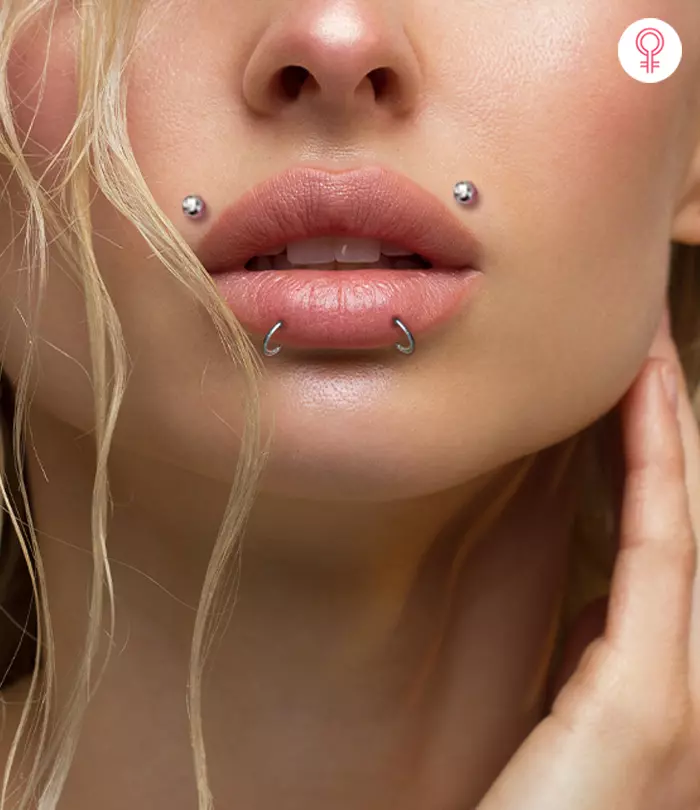





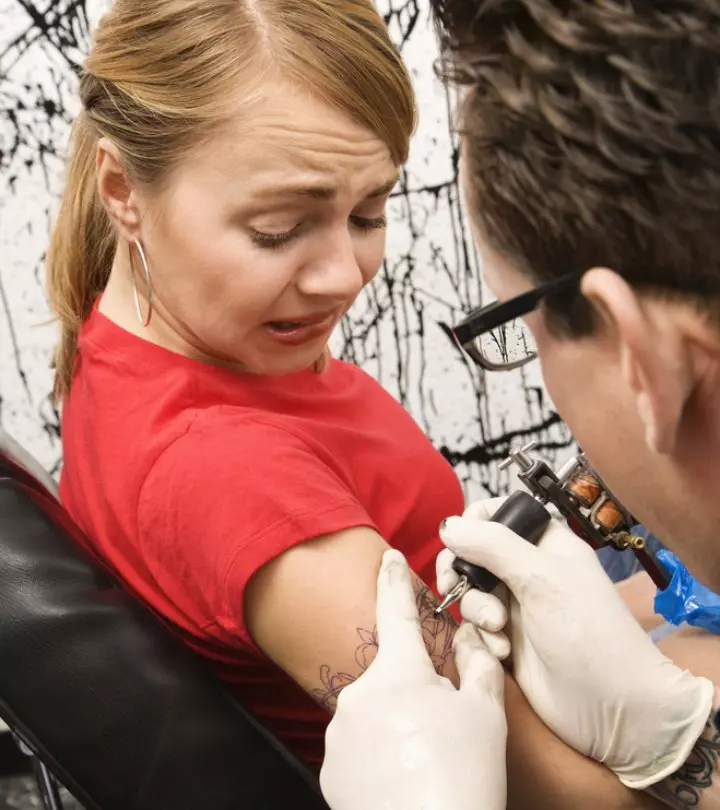
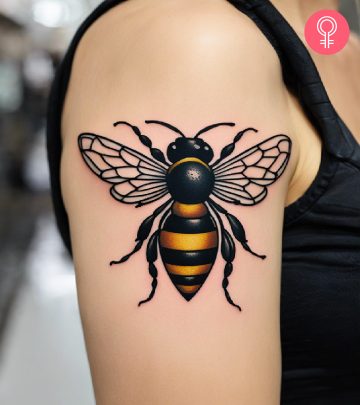
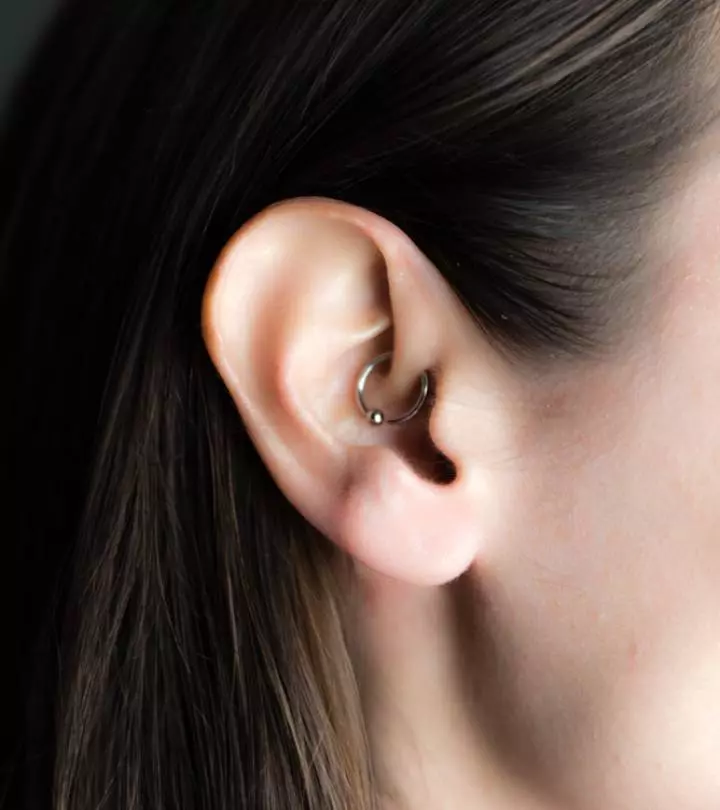





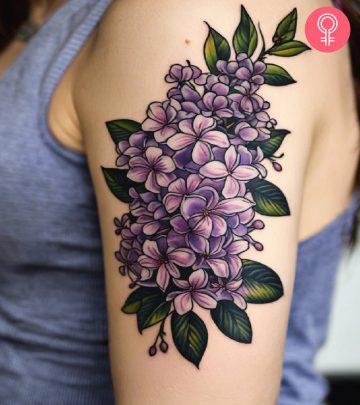


Community Experiences
Join the conversation and become a part of our empowering community! Share your stories, experiences, and insights to connect with other beauty, lifestyle, and health enthusiasts.